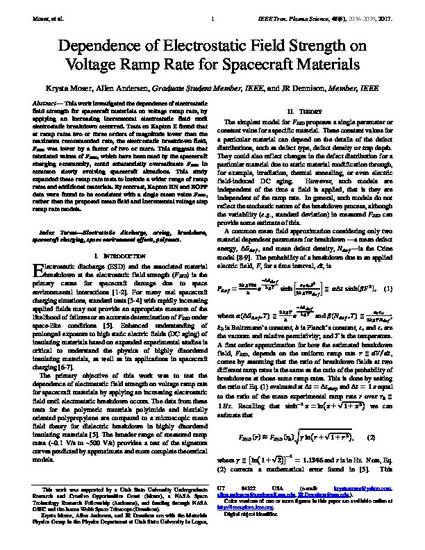
This work investigated the dependence of electrostatic field strength for spacecraft materials on voltage ramp rate, by applying an increasing incremental electrostatic field until electrostatic breakdown occurred. Tests on Kapton E found that at ramp rates two or three orders of magnitude lower than the maximum recommended rate, the electrostatic breakdown field, FESD was lower by a factor of two or more. This suggests that tabulated values of FESD, which have been used by the spacecraft charging community, could substantially overestimate FESD in common slowly evolving spacecraft situations. This study expanded these ramp rate tests to include a wider range of ramp rates and additional materials. By contrast, Kapton HN and BOPP data were found to be consistent with a single mean value FESD, rather than the proposed mean field and incremental voltage step ramp rate models.
